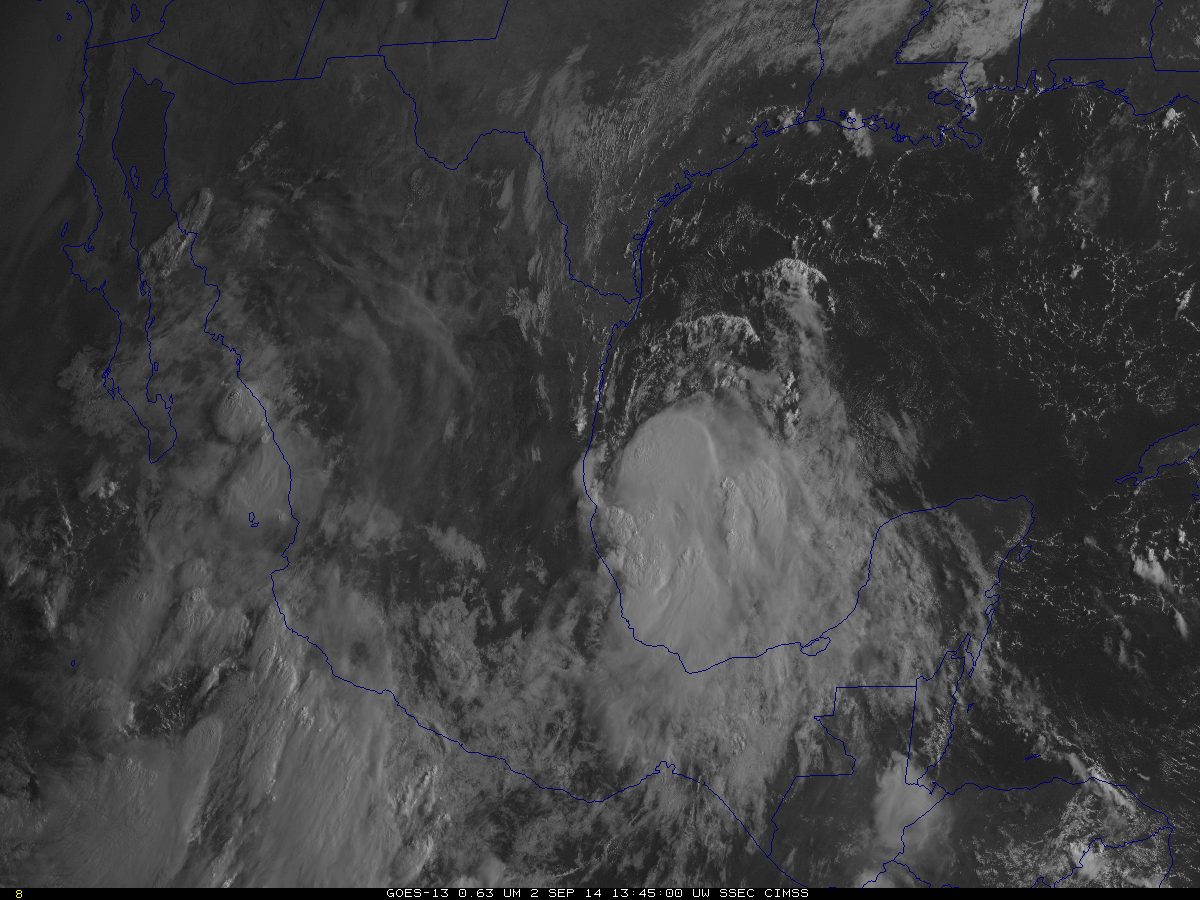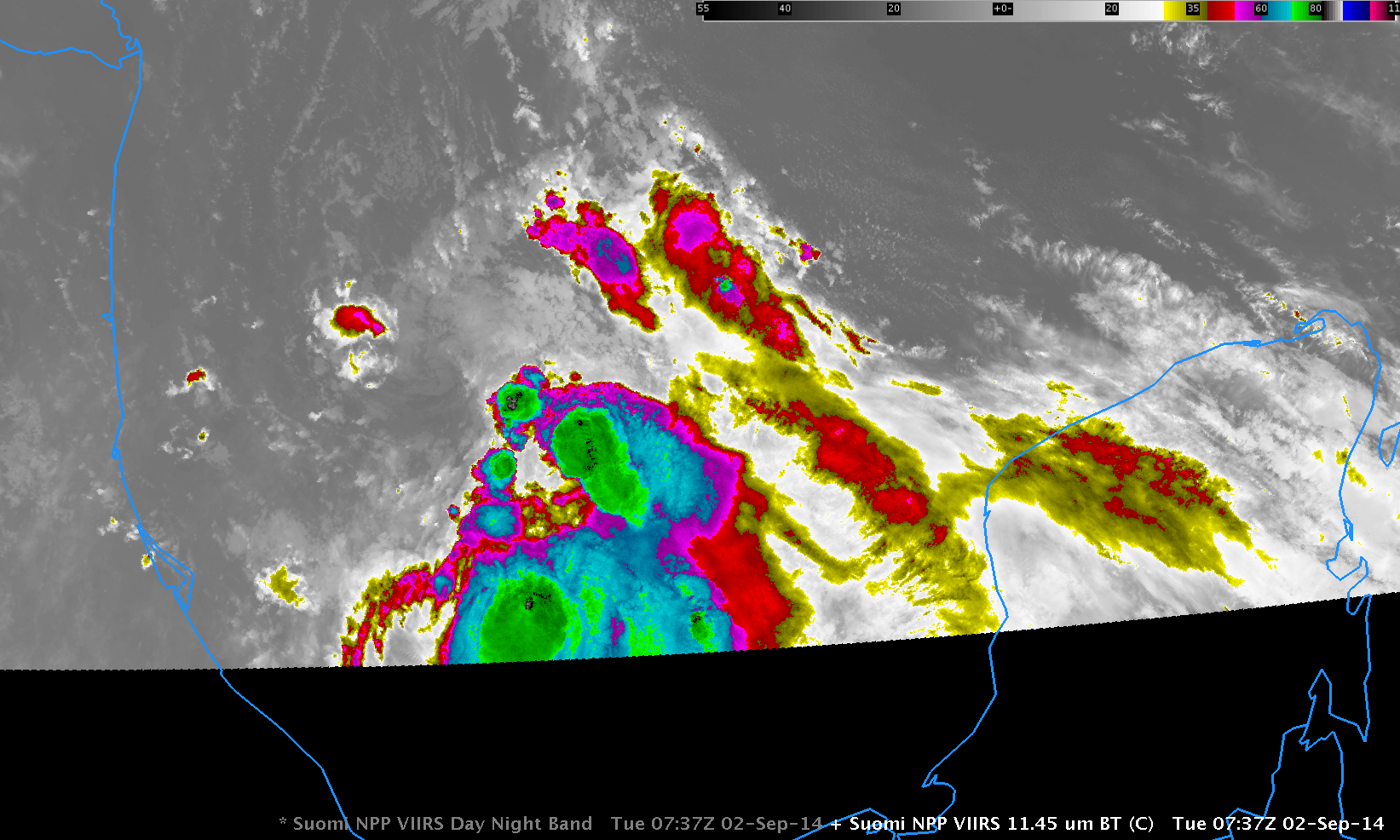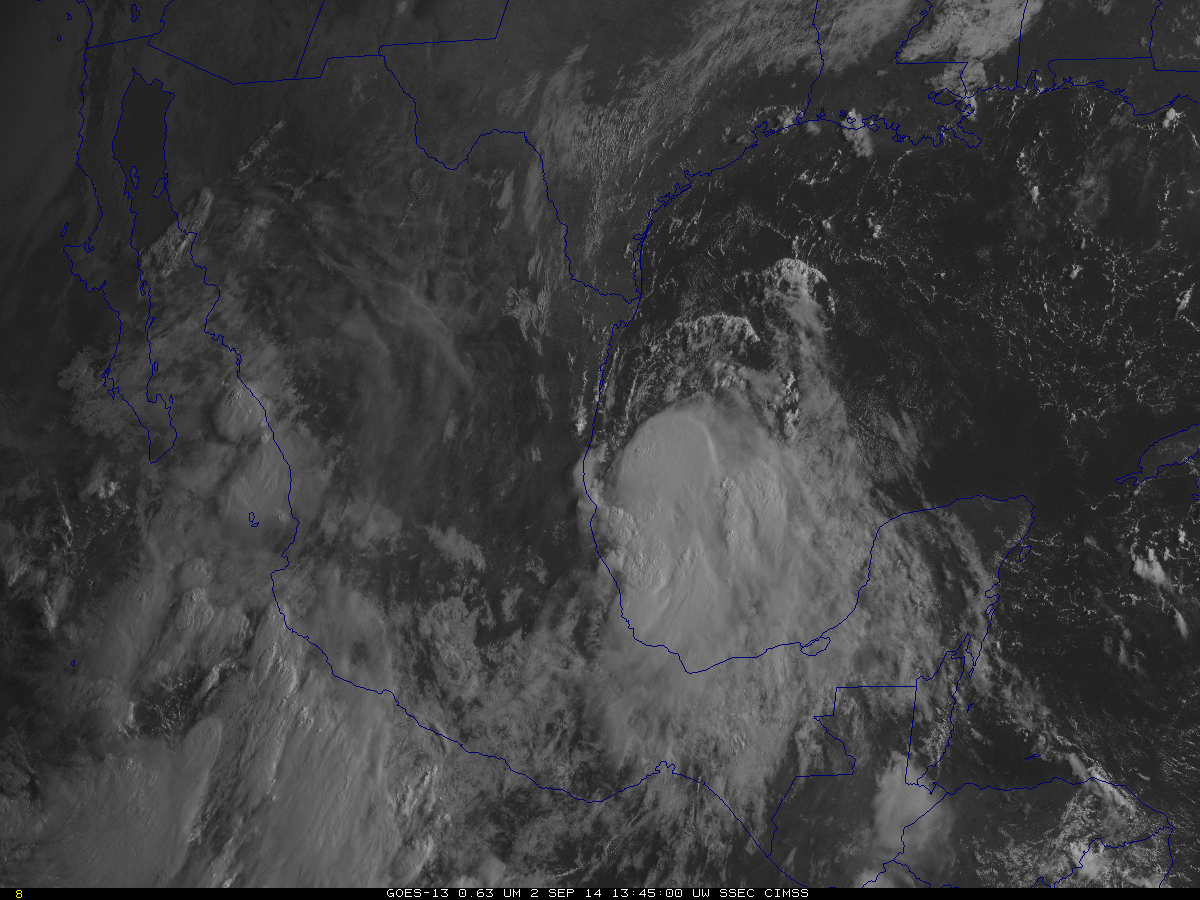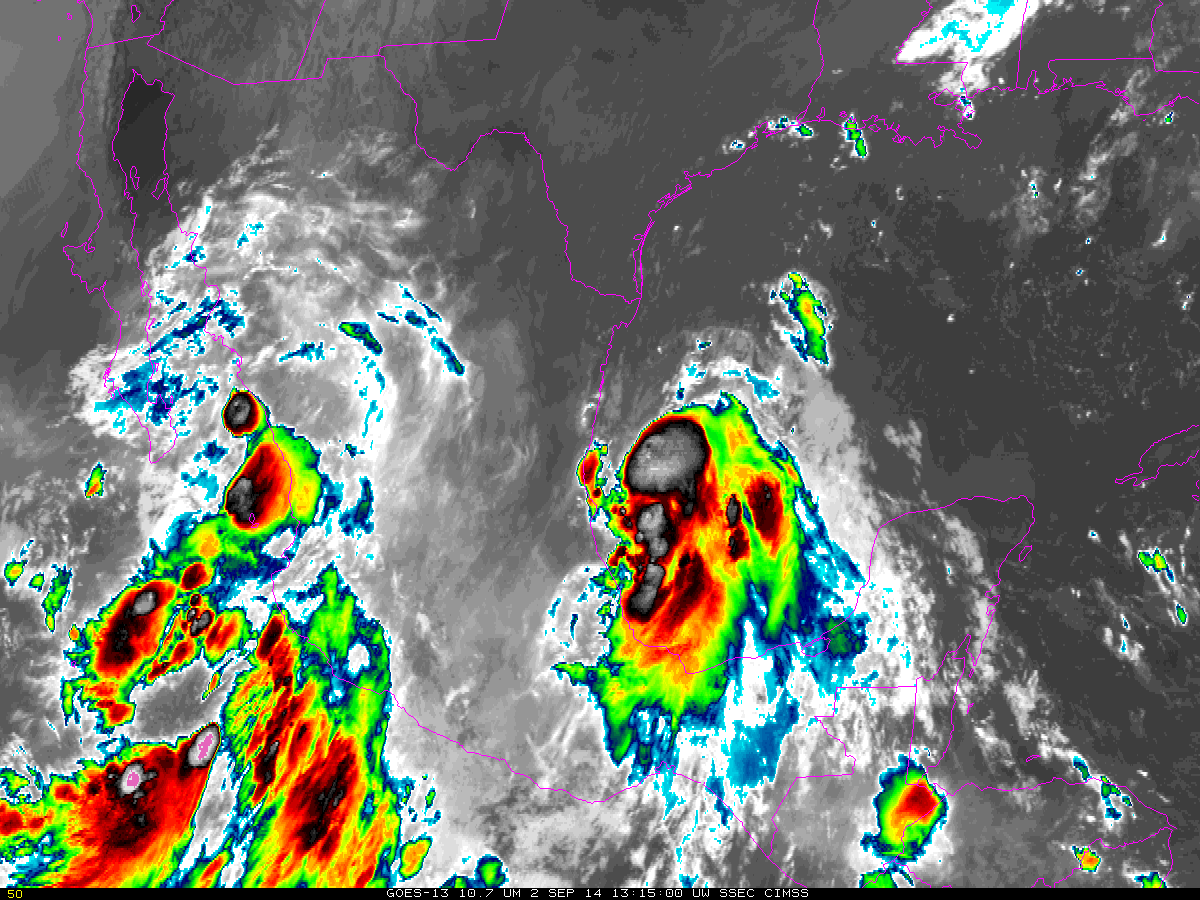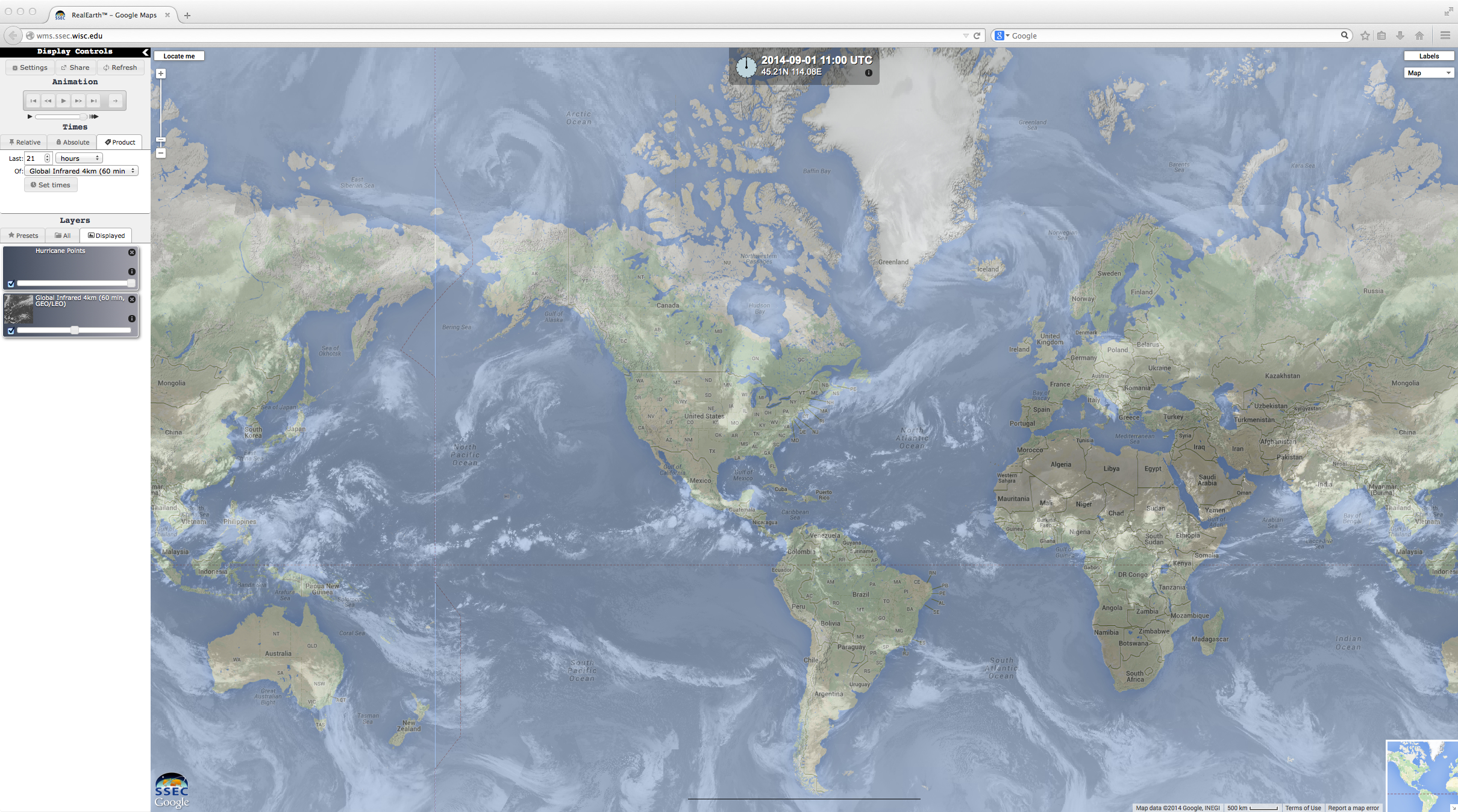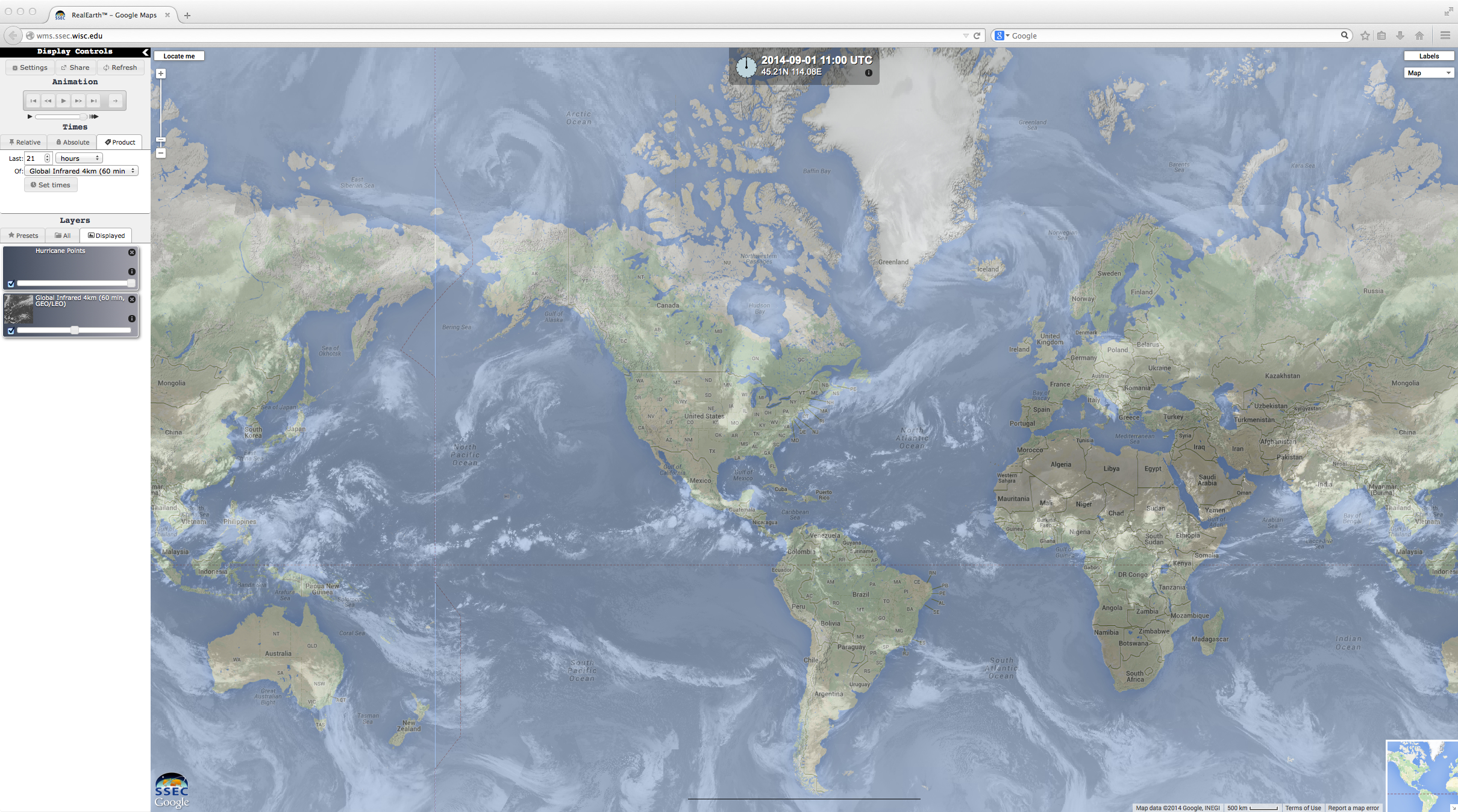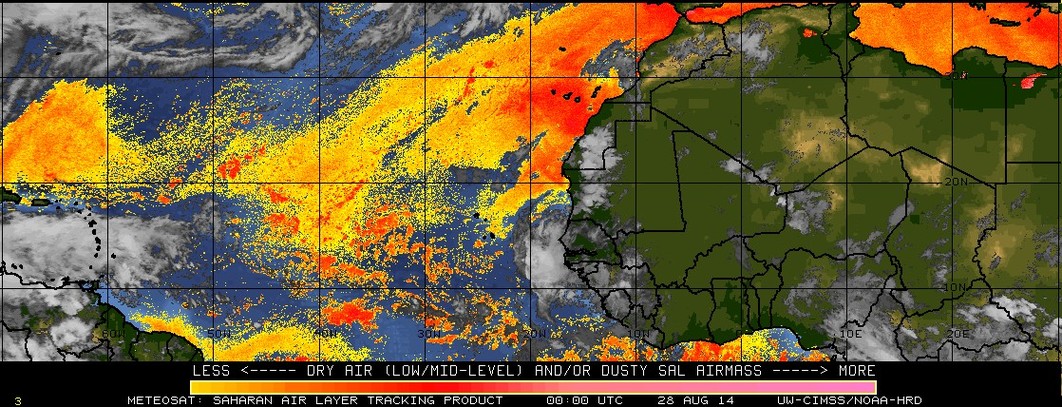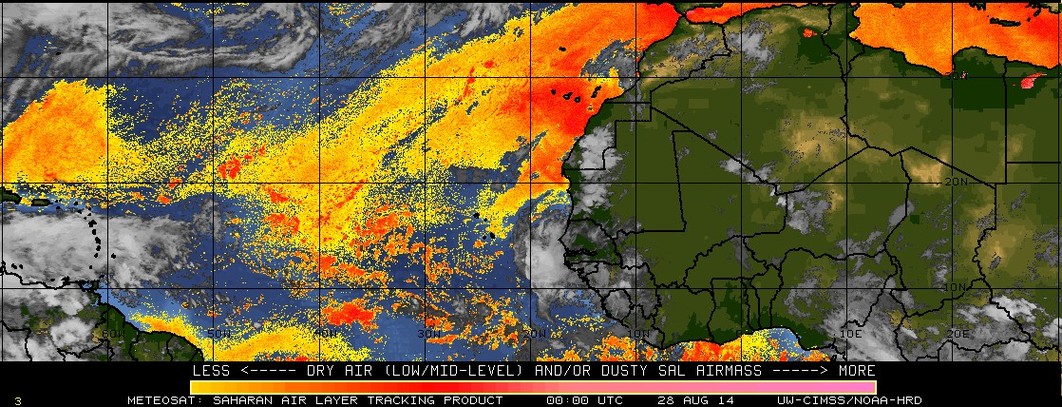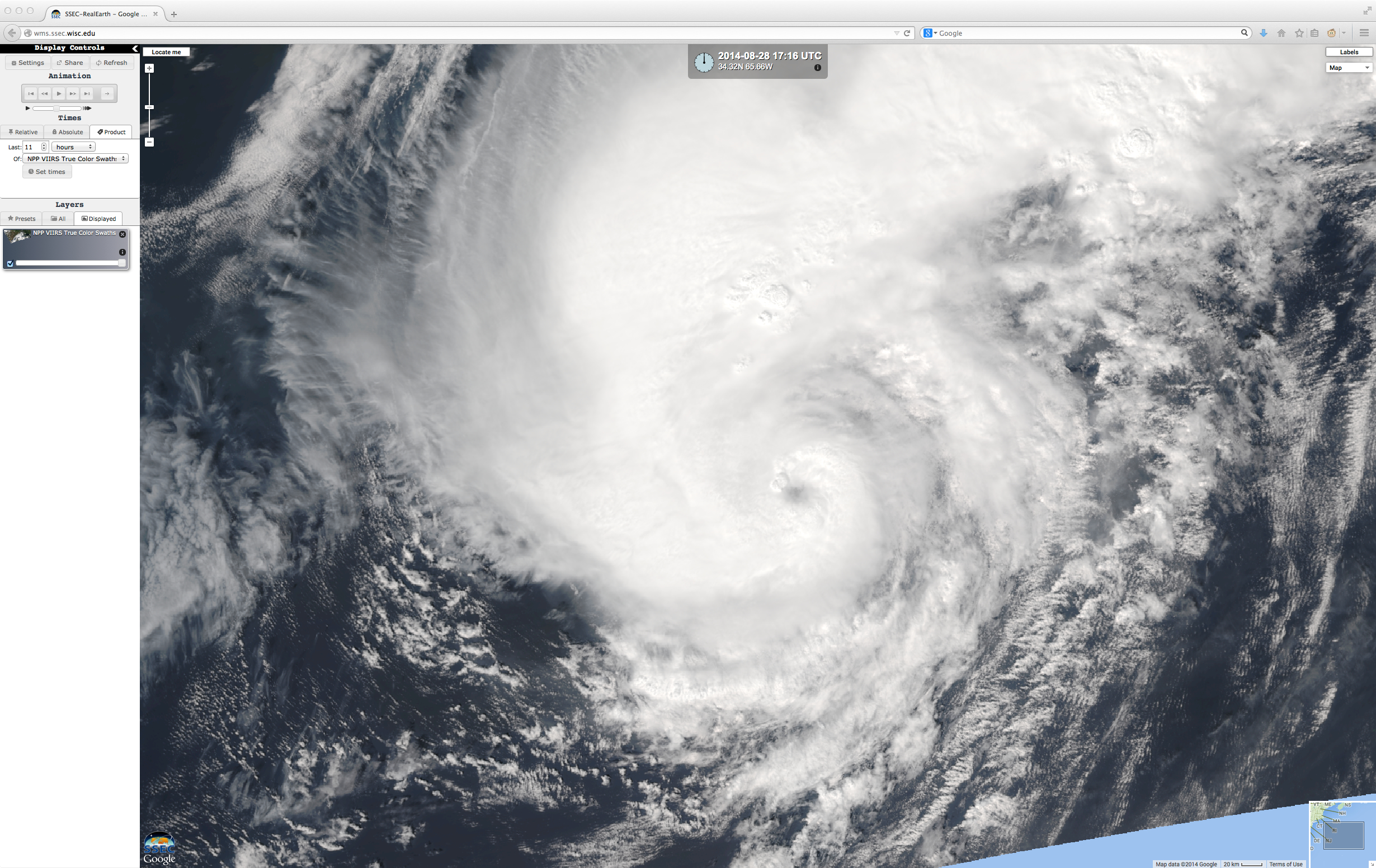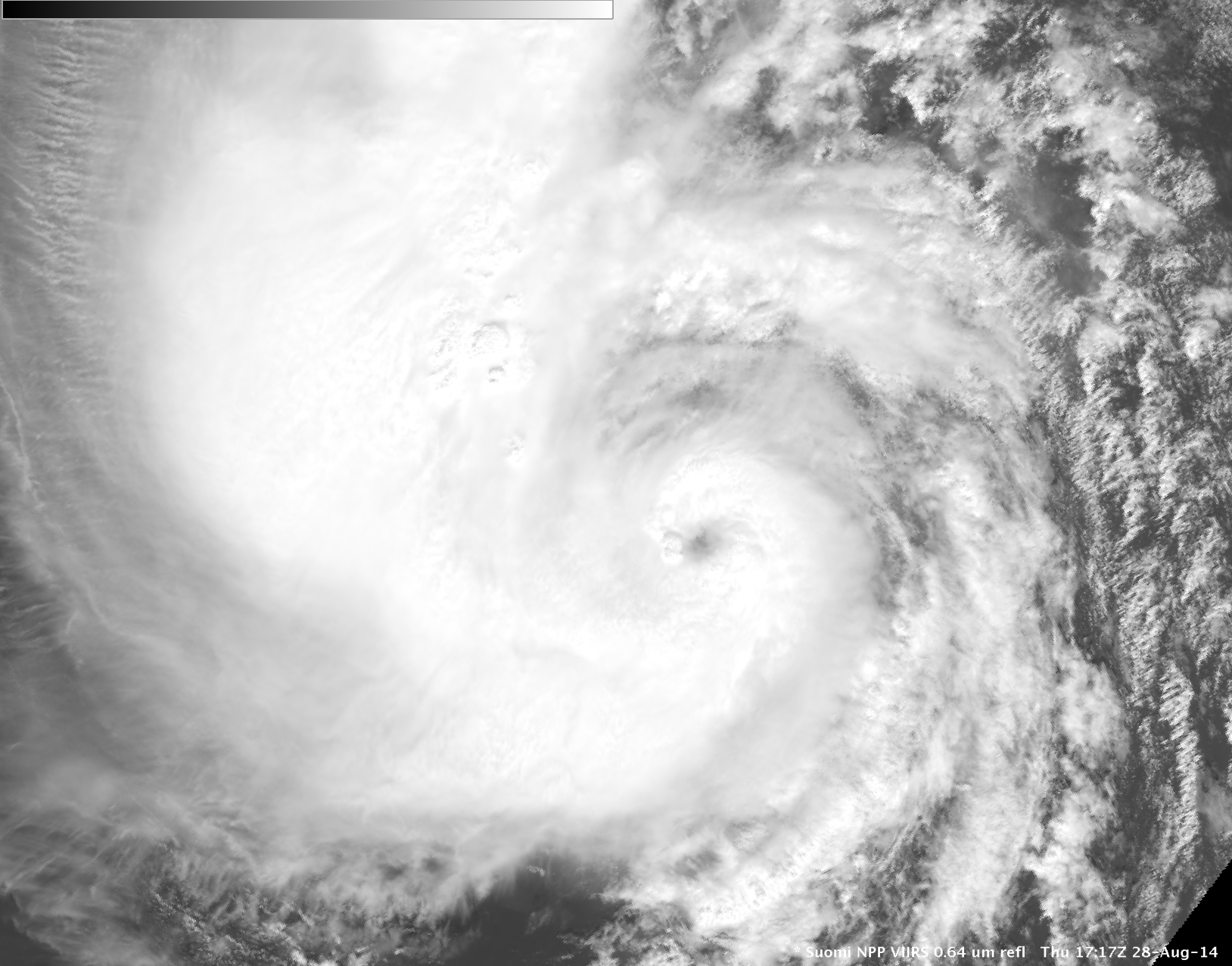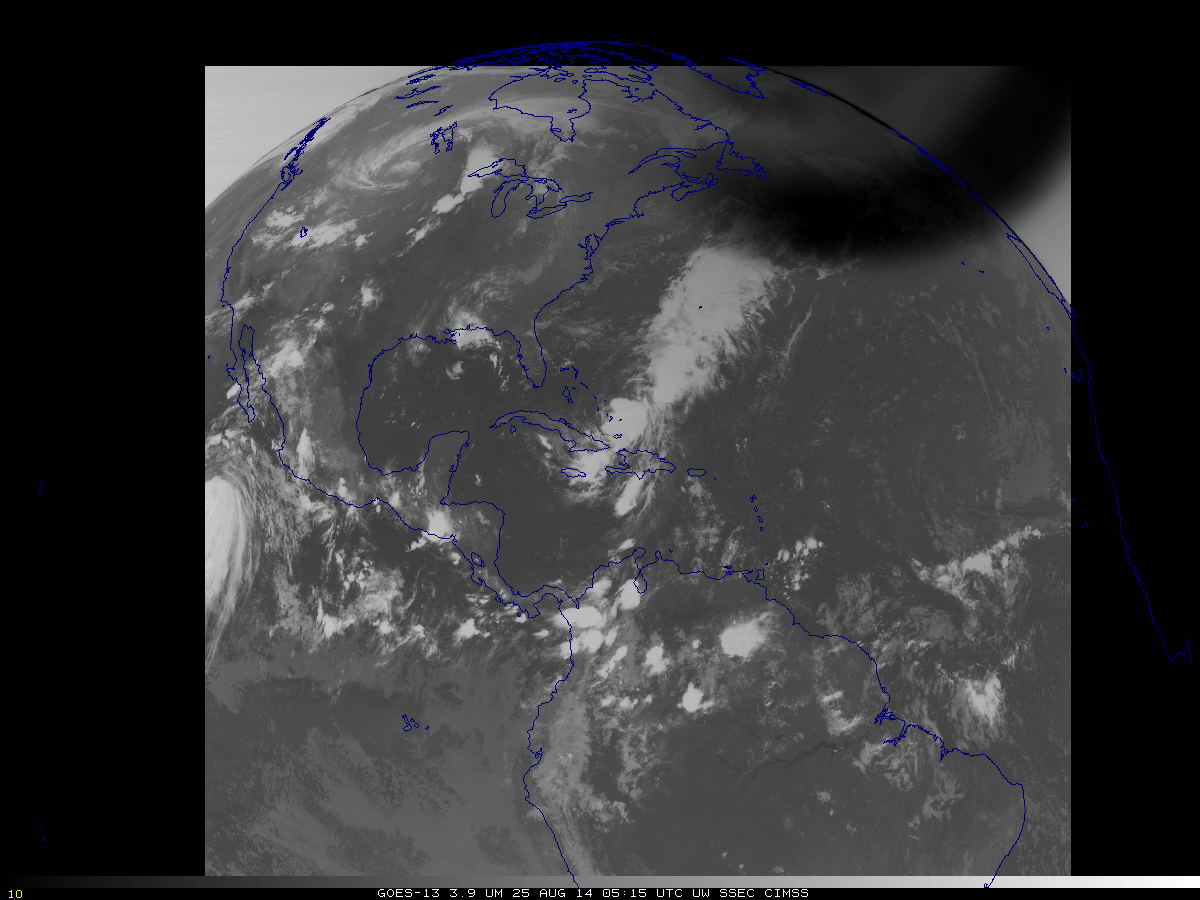Tropical Storm Dolly has formed in the western Gulf of Mexico. The Suomi NPP VIIRS Day Night Band imagery, above, shows the exposed low-level swirl of the storm (then still a tropical depression). North-northwesterly shear (shown here, from this site) means the deep convection (shown below) is displaced to the east of south of the the low-level circulation (click here for a toggle between the Day Night Band and the 11.45µm imagery). Cloud-top IR brightness temperatures from VIIRS were as cold as -87º C. ASCAT winds from 0230 UTC show a region of tropical storm-force winds associated with convection east and north of the circulation center.
Early-morning visible imagery from GOES-13, below, shows the large area of convection over the southern Gulf. The NHC-reported positions of the storm at 0900 UTC and 1500 UTC (22.6º N, 94.8º W and 23.4º N, 96.5º, respectively) are indicated by the red boxes on the images. Strong convection just south of the surface circulation developed at sunrise, obscuring the low-level swirl. That strong convection is especially apparent in the GOES-13 10.7 imagery, at bottom. GOES IR Brightness Temperatures were as cold as -84º C in the animation. (For more on Dolly from the National Hurricane Center, see this link).
View only this post Read Less


